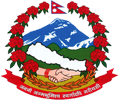Trade plays a vital role in the pace of economic development of the country by boosting the production and consumption sectors. The country’s foreign trade has been expanding every passing year and has increased by around four-fold in the last decade from Rs 220.5 billion in fiscal year 2005/06 to Rs 852.29 billion in fiscal year 2015/16.
Along with the rapid expansion in foreign trade, we need to upgrade our trade related infrastructure to facilitate trade and minimize the cost and time of trade. Robust infrastructure – Roadways, Railways, Inland Clearance Depots (ICDs), Integrated Check Posts (ICPs) – are the backbone of the trade sector. Infrastructure development will have a multiplier benefit to the production and consumption sectors.
Nepal Intermodal Transport Development Board (NITDB) has been engaged in developing trade related infrastructure as well as framing the legal and procedural modalities for the transit and transport service utilization from both neighbouring countries– India and China. For the sustainable development in trade facilitation, NITDB has been focusing on developing new ICDs and expanding the existing one to cater to the traffic in the future. Linking ICDs located in the southern parts has been given high priority in a bid to minimize the cost of transport and unleash the potential of industrialization in the Terai plains. ICDs in the southern plains also serve third-country trade as the country has been utilizing two gateway ports of India, namely Kolkata/Haldia and Visakhapatnam linking with railways and roadways. The railway operation between Nepal and India has been governing by Nepal India Rail Services Agreement.
Likewise, development of ICDs at the northern points is underway to facilitate trade with northern neighbor China. The ICD Timure (Rasuwa) and ICD Larcha (Sindhupalchowk) will help to boost trade with China. Third country trade via China will also be possible after exchange of protocol of transit treaty with northern neighbor. The Railway Service Agreement (RSA) with China must be signed following the exchange of protocol which will pave the way to ferry goods from the sea ports of China to the nearest rail heads of the Nepal border.
There are two other major ICDs planned with one located in Chobhar of Kathmandu and the other in Dodhara/Chandani of Far Western region of Nepal. The ICD at Chobhar, which is expected to be completed by 2019 with the financial assistance of the World Bank Group, will be linked with proposed Kathmandu-Terai expressway. The ICD Chobhar is expected to create synergy for the industrial development in the outskirts of Kathmandu Valley.
The ICD in Dodhara Chandani of Far Western region of the country has been planned to minimize the cost of third-country trade as the location is at the shortest distance from India’s major seaport, Jawaharlal Nehru Port Trust (JNPT) in Mumbai. However, nothing concrete has happened regarding the development of the ICD and utilizing the additional Indian port for third-country trade. This is our long-term plan to facilitate international trade in an efficient and effective manner.
NITDB has to work for recognition of Nepalese dry ports in international business community which shall reduce our transit time and cost. For this, we have to work mainly for; simplification in procedural hassles to trade; implementation of transshipment procedure; enhancement in railway operation and strengthen the institutional framework.
Lastly, NITDB expects fruitful suggestions and ideas from all to minimize the cost and time of the country’s foreign trade.
Executive Director






